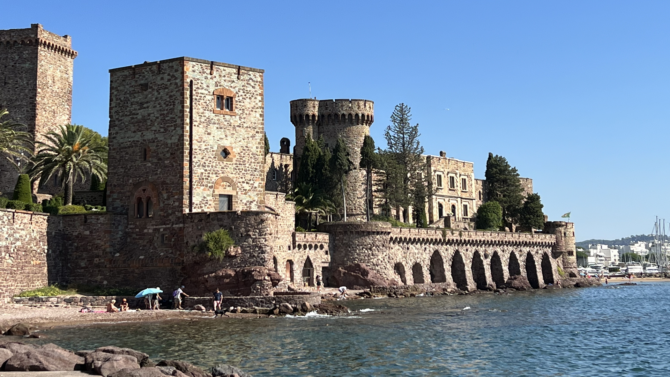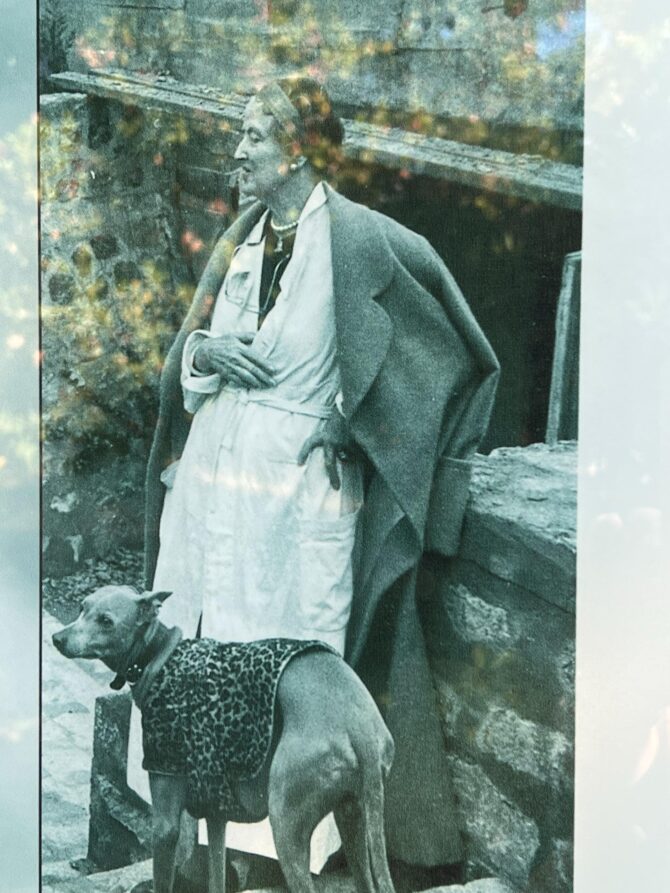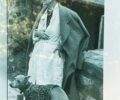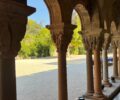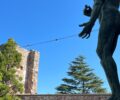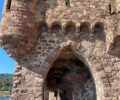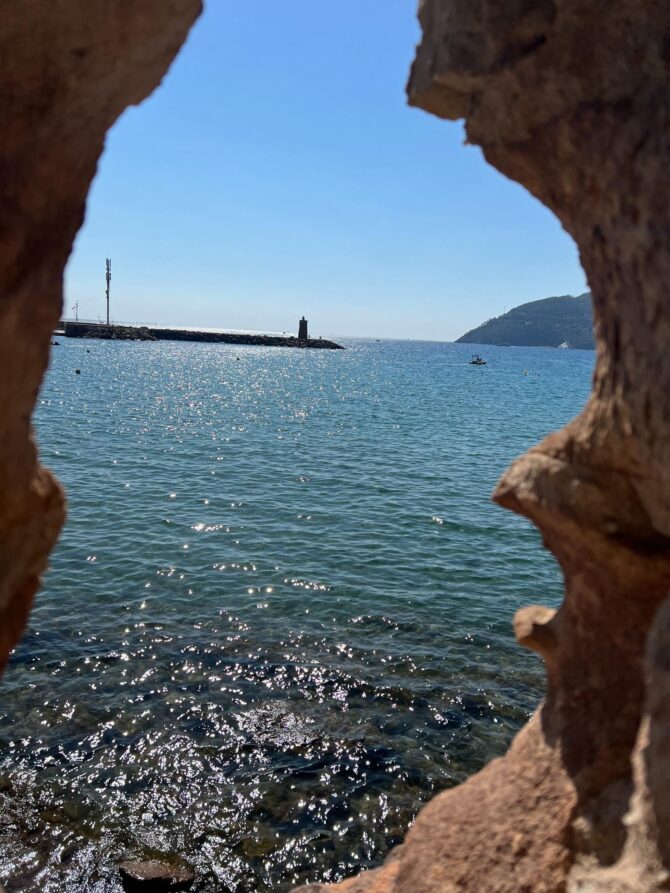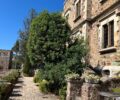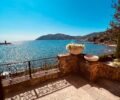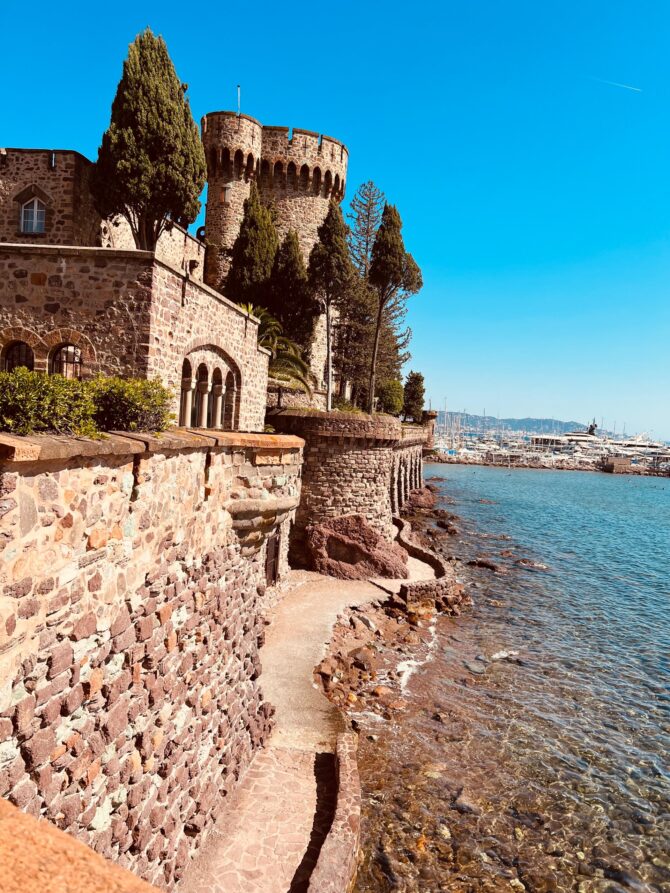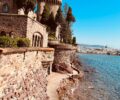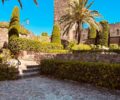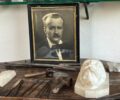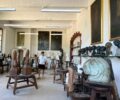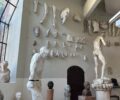Once Upon A Time at Chateau La Napoule
Mandelieu-la-Napoule sits just to the southwest of Cannes on the Cote d’Azur and is home to the Chateau de la Napoule, once a medieval fortress; later destroyed in the French Revolution; and ultimately restored and renovated by the 20th Century American artist Henry Clews Jr. and his wife Marie. Today, the chateau boasts a terrace overlooking the Mediterranean Sea which literally laps at the feet of its stone walls.
The story surrounding the chateau is both captivating and romantic. Henry Clews, son of a self-made, wealthy American banker, purchased the place in 1919 a year after the end of World War I. Marie, his second wife, then Elsie Whelan, was considered the most beautiful debutante in Philadelphia. She had married the affluent Robert Goelet of New York, and had a passion for art, musicians, painters, also enjoyed singing and painting. Indeed, she had studied art with Henry Clews at his studio in Newport, Rhode Island. But her husband’s strong disapproval and controlling behaviour brought about an end to their marriage and they divorced in 1914. By the end of that year, Marie and Henry were married and decided to move away from American Society to Paris, each leaving two children behind. Whilst later on holiday on the French Riviera with their baby son, Mancha, Henry and Marie fell in love with the Chateau de la Napoule and decided to devote their lives to restoring it as a place where Henry could dedicate himself to the creation of art and shape a lifestyle reflecting the glories of the past.
The couple loved to entertain, and costumed themselves elaborately to receive their guests, enjoying candlelit dinners in the splendid Gothic dining hall. They entertained many friends from the titled families of Europe – the Duke and Duchess of Windsor once came for tea! Winston Churchill visited in the mid 1930’s, as well as composer Frederick Delius; conductor Sir Thomas Beecham; and Emerald Cunard.
Henry produced a great deal of work in his studio at La Napoule, resembling some of the great moderns in his imaginative and exotic inventiveness. His portrait busts were praised by the Museum of Modern Art in New York City. His imposing statue, ‘The God of Humormystics’, greets you in the courtyard – he is the centre and heart of the chateau. A kindly, smiling figure, the old God serenely holds out to all his visitors the mystic rose of the spirit – a symbol of earthly and divine love. He tramples under his left foot a toad representing evil, and he releases from under his right foot, the head of a smiling woman, his inspiration. Around the base a wreath of grotesque heads of two babes, the head of Mary the Divine Mother and that of Mary Magdalene, the forgiven sinner. Near them, the dovelike ‘Holy Spirit’ illuminates humanity. The garland of faces is held in place by a great serpent swallowing his tail, the symbol of eternity. And gathered around the base are ‘Adam and Eve’ as children representing human love.
Henry and Marie, in true collaboration, worked on La Napoule from 1919 to 1937 when Henry died after a long illness. He is buried in ‘La Mancha Tower’ at the chateau. Marie lived on until 1959, remaining at the chateau during World War II – a time when most ex-pats returned to safer shores in America. Occupying German soldiers tried to evict Marie from her beloved chateau but she refused to leave, staying to protect it. She is buried alongside Henry at the chateau. Their son, Mancha Madison Clews is now in his 80’s, married for 50 years with three children and seven grandchildren, and despite mixed emotions of a rather lonely childhood at La Napoule, he acknowledges that it is both a memorial to the talent of Henry Clews and a celebration of American art and culture.
As I walk around the chateau, absorbing its history, I can feel myself falling in love with the building and its magic. I trace the initials “H&M” on the mantel in the main salon with my fingertips as I marvel at the crimson-coloured couches with the bright blue Mediterranean beyond. I imagine Henry and Marie sitting outside on the terrace sipping afternoon tea, their indistinct chatter fading in the breeze. There are sculpted playing cards stuck to the ceiling of the splendid Gothic dining hall giving a humorous nod to the jolity of dinners past. I stand in awe in Henry’s studio, filled with busts and life-size sculptures and fantastical creatures. His old desk still sits in the centre of the studio, displaying his sculpting tools as if he has just left the room. Outside, the fragrance radiates a gardener’s tender care and artful design and in the cloisters where Henry and Marie would no doubt often stroll, I sense the ghosts in the stones. Standing before ‘La Mancha Tower’ – their final resting place – I am moved at how Henry lay waiting for his beloved for 22 years before they were reunited.
In the words of Henry Clews: “It does not matter much what you love, but you must love something with all your heart and soul. Then you become a living personality.”
Lead photo credit : Chateau_la_Napoule , Photo: Gillie Hutchinson
Share to: Facebook Twitter LinkedIn Email
More in Provence-Alpes Cote d'Azur, Provence-Alpes-Cote d'Azur, Provence-Alps Cote d'Azur
